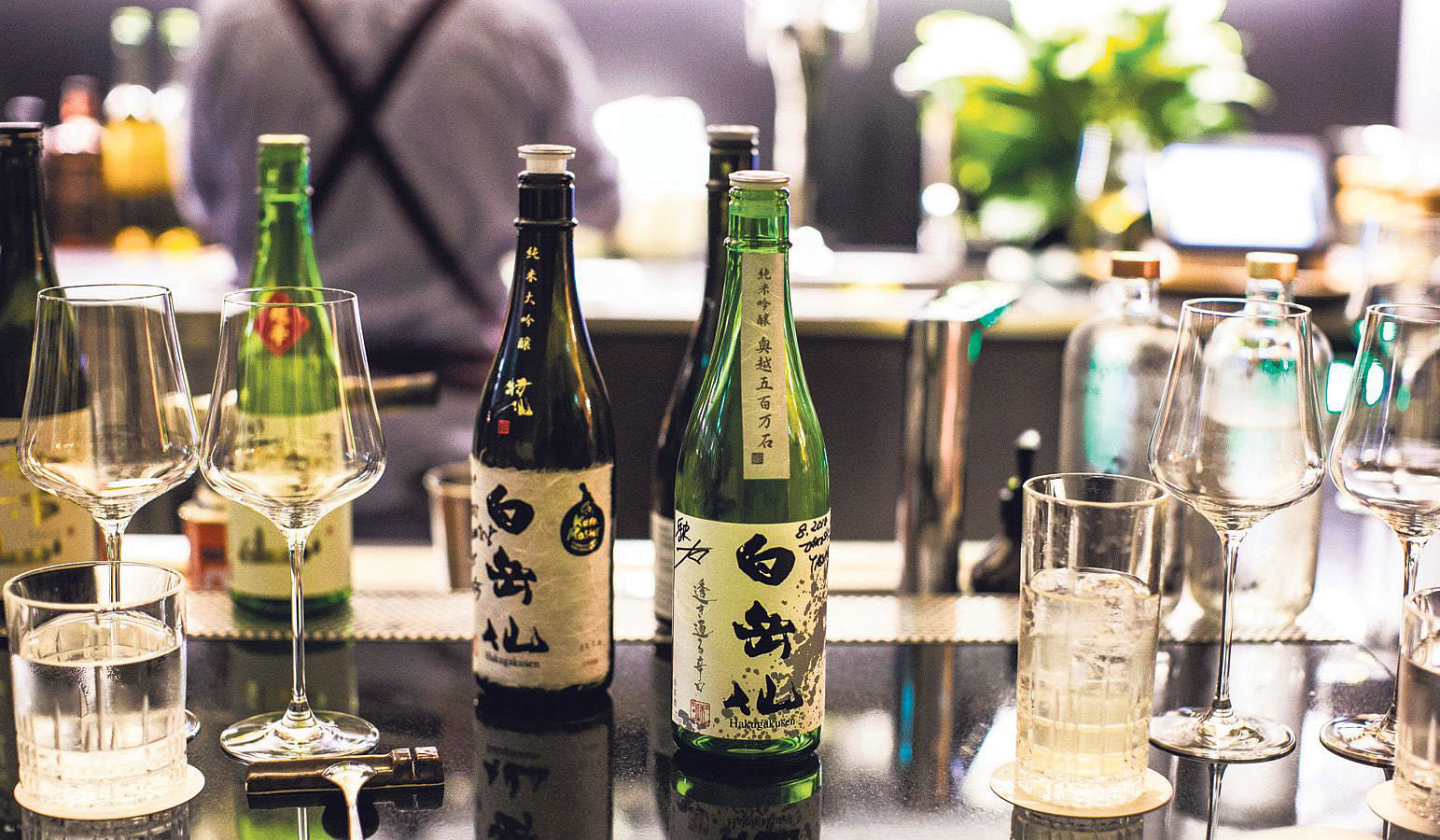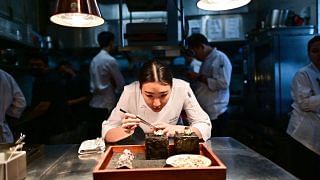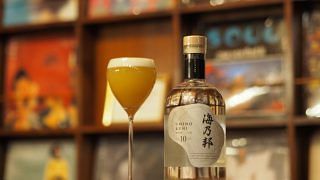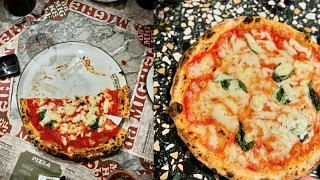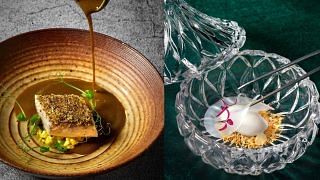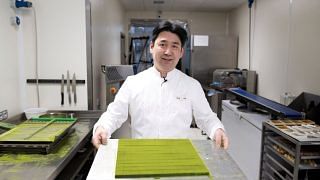[dropcap size=small]W[/dropcap]hile it’s convenient to label sake as rice wine, it’s really not a wine. Made from rice and brewed, the process is closer to beer-making, whereas wine comes from grapes that are left to mostly ferment naturally.
But two high-end sake makers who have spent generations making their precious brew the traditional way, have been inspired by the international appeal of wine to adopt wine-making techniques themselves.
(RELATED: All you need to know about the age-old Japanese craft of sake-brewing)
The two breweries are Yasumoto Brewery – which makes Hakugakusen sake – and Tokoyama Sake Brewery with its Jozan brand.
Takeshi Yasumoto, the sixth generation owner of Yasumoto Brewery, uses wine yeast instead of sake yeast for his Hakugakusen “Wine Cell” Junmai Ginjo 2017. Released in June 2018, it has a different aroma and acidity from sake, which contains lactic acid compared to wine’s malic acid.
“Acidity is important and the Wine Cell Junmai Ginjo pairs better with western food,” says Mr Yasumoto, who is also the chief brewer.
With sake becoming increasingly popular among foreigners, more breweries have been exporting overseas in order to grow their business. But the challenge comes when the sake doesn’t always match the local food culture.
(RELATED: A sake spin on yong tau foo)
While Mr Yasumoto decided to use wine yeast in his sake to make it more suitable for Western food, he also notes: “Food culture is changing, with traditional chefs using not only Japanese ingredients but also western ingredients. And vice versa, with French chefs using Japanese ingredients. This collaboration in food is a good opportunity for sake to collaborate with wine.”
In turn, Shinpei Tokoyama, fifth generation owner and brewing director of Tokoyama Brewery which makes Jozan sake, is more attracted to the concept of wine aging, which is different from sake that is meant to be drunk fresh.
Jozan will be aging its sake in Japanese oak barrels from October 2018 for a year, which “is the first time sake is being aged in such barrels”, says Mr Tokoyama. “By adding the wood element, I can create a difference in aroma and increase its value.”
(RELATED: Barrel-aged cocktails)
Some brewers have aged sake before but he feels it’s not about deliberate aging but long-term storage. When it’s ready in 2019, he is confident it won’t just be well-received overseas but also by local Japanese who can enjoy sake in a different way.
The two brewers were in town recently to showcase their small-batch sakes handcrafted with handmade koji – the mould for making sake. They teamed up with Michelin-starred restaurant Nouri’s head chef Ivan Brehm to create a sake pairing menu to show how it can easily match non-Japanese cuisine.
(RELATED: For charcuterie’s sake – Pairing sake with meat)
Hokkaido scallop sashimi in a coconut milk and kaffir lime sauce with its smooth mouth feel and sweet citrusy flavour lent itself well to the Hakugakusen “Black” Junmai Daiginjo, a fruity sake with a high 16 per cent alcohol content.
The delicate sweetness of fresh crabmeat, gooseberries and crunchy fried Japanese potato in a clear crab dashi was an elegant match with the Jozan “Echizen” Junmai Daiginjo, made with a relatively rare rice – miyaminishiki – which had a strong rice aroma and hint of banana.
The basil risotto enriched with Parmesan and aged balsamico was heavy, but the Hakugakusen “Okuetsu” Junmai Ginjo, whose fruity bouquet masked its dry, almost severe character, did a good job of refreshing the palate.
Sous-vide iberico pork collar accented with the earthiness of black truffle was paired with a dry Jozan Cho Kara Junmai Daiginjo. But what took the cake, literally, was the sake for dessert which illustrated the versatility of these two breweries. Hakugakusen “Tokusen” Junmai Daiginjo was semi-dry, yet still beautifully complemented the sweet bay leaf ice cream and apple jam.
“When most breweries are automating to increase production, it’s amazing to meet tojis like Yasumoto-san and Tokoyama-san who are committed to their craft and prefer to use their hands and intuition when producing sake,” says Andre Chalson, managing director of Mead, which distributes the two brands in Singapore.
Times may be changing for the sake industry as it adapts to foreign influences, but once in a while, welcoming new ideas could result in something a lot better. We can’t wait.
Hakugakusen and Jozan sakes are distributed in Singapore by Mead. mead.com.sg
(RELATED: Why biodynamic wines and high-end sake are finding their way to more pairing menus in Singapore)
This article was originally published by The Business Times.



